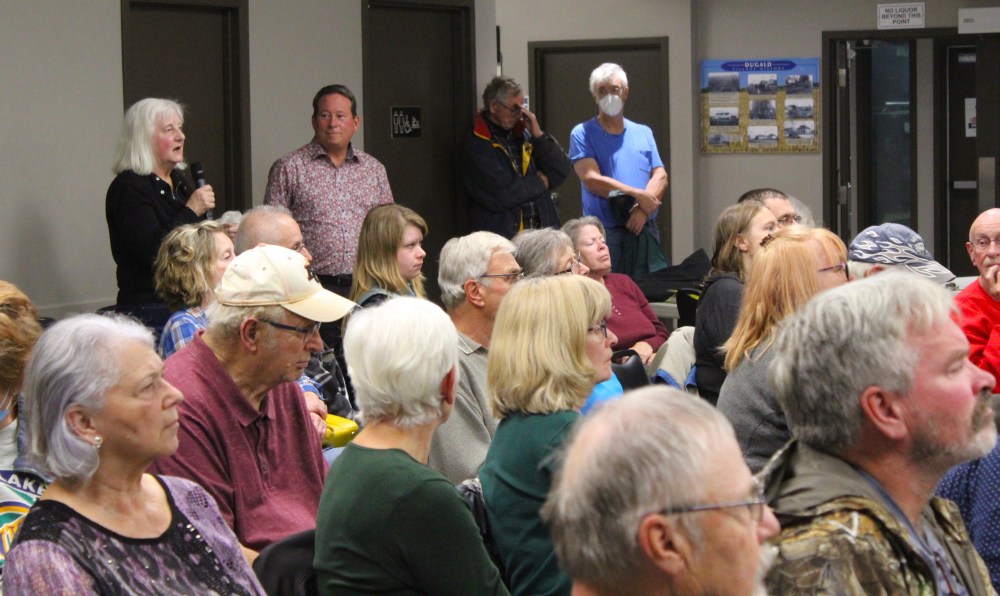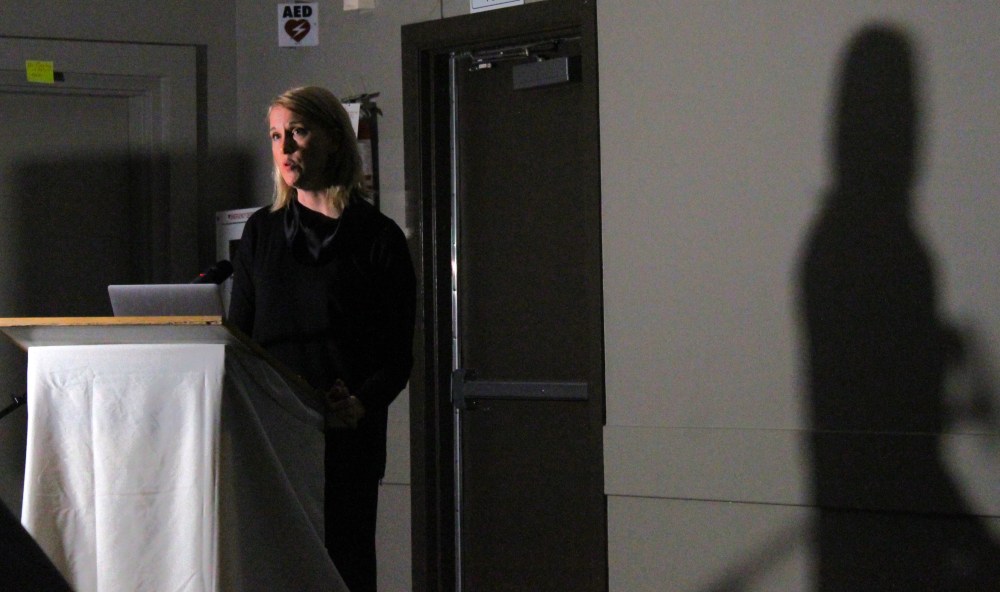Sio Silica mining opposition prepare for hearing to decide processing facility fate
Advertisement
Hey there, time traveller!
This article was published 19/10/2023 (565 days ago), so information in it may no longer be current.
One hundred people packed the Dugald Community Club Oct. 12 to hear how they could use the hearing starting Oct. 23 to oppose the Sio Silica sand mining operation trying to get into the ground in the RM of Springfield.
The Municipal Board of Manitoba scheduled Oct. 23-25 to be available at the Dugald Community Club to hear from anyone who wants to comment on Springfield’s development agreement with Sio Silica that failed to be passed by council. Sio Silica is appealing that result from council because the municipal board ordered the RM to pass an agreement for its $100-million Vivian processing facility east of Anola, which is why this hearing is being held.
Springfield councillors Andy Kuczynski and Mark Miller were at the Oct. 12 meeting in Dugald and have been advocating to have more public hearings during their opposition to the mining project that the company says will safely provide material for things like solar panels, batteries, and semiconductors, but that opponents say puts water quality at risk through potential shale layer collapse in two aquifers that provide water to tens of thousands of people in the Southeast.

The municipal board hearing is another chance for residents to get their say on the record. After the board is done hearing submissions, its decision is final on whether the unpassed development agreement can be used with or without extra terms.
The Oct. 12 meeting brought in land use planner Jennifer Lim, who owns Threshold Planning Studio, to give a presentation on how development agreements are supposed to work in her experience.
Lim used metaphors and laymen’s terms to try her best to break down land use planning into something those in attendance could quickly grasp and use at the upcoming municipal board hearing.
“Think of land use planning in Manitoba like following the rules in a game. Our master rule book is the Planning Act, and it guides how municipalities make decisions about land use. Springfield has a team of five area councillors who at times ask for advice from the chief administrative officer, and they don’t always agree on the matter. But the rules are that they must make a decision, and once the decision is made, the team has to align with that decision.
“Now sometimes the decision is invalid because council made a decision that didn’t follow the rules. Everyone has to play by those rules. Those who know the rulebook can call them offside, and then the whole game gets thrown out,” explained Lim.
She went on to talk about Springfield’s own rulebook: its zoning bylaw. She said with the mining project described as a natural resource project, there are clear rules.
Lim said in her professional interpretation, that means while the province gives the license, the RM gets to make an agreement that deals with water use — among many other details as varied as site design to weed control.
“The Vivian sand processing plant hasn’t gone through a related public hearing process before your local council. A public hearing is a mandatory part of a legislative requirement for adopting a zoning bylaw,” said Lim, who cooked up another metaphor.
“Skipping this step is like skipping the ingredients that give the recipe local flavour,” she said.
Lim also said how council passes a zoning change can be challenged in court within a year. When council failed to pass the development agreement in June, it did pass a zoning bylaw change for the Sio Silica development.
“By undertaking a bylaw process by resolution and avoiding a legislated public hearing, council has acted in excess of its jurisdiction and failed to comply with requirements of the Municipal Act and the Planning Act. This means up until June 19, 2024, a person may make an application to the Court of King’s Bench for a declaration that the resolution is invalid,” said Lim.
So even after the municipal board decision, there may be more legal maneuvering by opponents. Lim also believes the extraction wells themselves are up for zoning and legal consideration.
Then there is the political reality to consider.
There is a new provincial government sworn in this week. Miller and Kuczynski have already started making overtures to the NDP leadership as it organizes its first priorities.

“Andy and I and other members of the public are trying to meet with the political leaders of the day, so we will continue to implore them and advise them that this is not a great mine, that they ought to take a sober second look,” said Coun. Miller when asked by a member of the crowd about what he heard from the incoming government.
A 105-page report from the Clean Environment Commission was released in June after public hearings in Steinbach, Anola and Beausejour where over 300 people gave written and oral submissions.
The report included a foreword titled Considering a Project Without Precedent. It read that after help from independent experts on highly technical material, members of the Clean Environment Commission panel were, “unable to state with confidence that all potential environmental effects of this project have been fully considered and that adequate detailed plans have been prepared for preventing or mitigating these effects. This is not to disregard the work of the professional engineers and scientists who carried out assessment activities on behalf of the proponent. Rather, the uncertainty that remains about this project is largely a result of the unique nature of the Vivian Sand Extraction Project.”
That uniqueness is in the extraction method known as airlift, which the report describes: “air pumped down wells into a layer of loosely consolidated sand will draw up a mixture of sand and water. This airlift method is an established method of extracting water from wells, but to the commission’s knowledge has never been used to mine silica sand. Compared to conventional open-pit mining, the approach has potential environmental and economic advantages which make it worth judicious review.”
Sio Silica hopes when fully operational to be extracting up to 1.36 million tonnes of silica sand per year for four years from as many as 1,200 extraction wells near Vivian. Those wells would all need to be sealed after they are done being used to prevent contamination.
The Oct. 12 meeting was organized by the Springfield Taxpayers Rights Corporation, which has experience trying to get public hearings and development agreements when it fought the 48,000-foot Berger peat moss mixing plant near Oakbank that produces growing media for greenhouses.
“I think the most important thing to remember is… we’re out to stop this, doing everything in our power to do that,” said Springfield Taxpayers Rights organizer Allan Akins.
“And the second thing is if we don’t win there (at the municipal board), we want a development agreement that is so strong that it makes sure that every single one of us are protected,” said Akins.
The municipal board hearings start Monday at 9:30 a.m. and require registration 10 working days ahead of the hearings from anyone who wants to make a submission.
Documents related to the hearing are available for the public to view at the RM of Springfield office in Oakbank.
